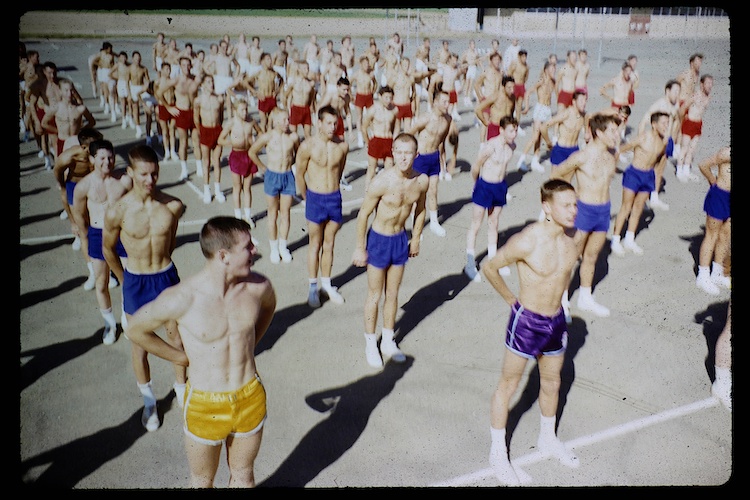
In most modern high schools, P.E. is a complete blow-off class — something to take when you don’t play a sport, and have to fulfill a health/fitness-related elective. Participants often sit on the bleachers and talk, or half-heartedly play some basketball.
There was a time in this country when P.E. was taken more seriously, however, and it reached its absolute apex at La Sierra High School in Carmichael, California.
During the 1950s and 60s, La Sierra boasted what was arguably the most rigorous P.E. program in the country, if not the world. The so-called “La Sierra System” was born in a time when World War II was over, the Cold War was still heating up, and prosperity and technological advancements were making life increasingly sedentary and comfortable. In this atmosphere, there existed a national concern over whether Americans were becoming too soft, overweight, and complacent to not only defend their country in war, but to vigorously meet the challenges of peace.
As President John F. Kennedy wrote in “The Soft American”:
physical fitness is not only one of the most important keys to a healthy body; it is the basis of dynamic and creative intellectual activity. . . . [We] know what the Greeks knew: that intelligence and skill can only function at the peak of their capacity when the body is healthy and strong; that hardy spirits and tough minds usually inhabit sound bodies.
In this sense, physical fitness is the basis of all the activities of our society. And if our bodies grow soft and inactive, if we fail to encourage physical development and prowess, we will undermine our capacity for thought, for work and for the use of those skills vital to an expanding and complex America.
Thus the physical fitness of our citizens is a vital prerequisite to America’s realization of its full potential as a nation, and to the opportunity of each individual citizen to make full and fruitful use of his capacities.
To stem the physical deterioration of his fellow Americans and promote the idea of developing a sound mind, in a sound body,JFK utilized the President’s Council on Physical Fitness to reinvigorate physical education programs around the country, and looked to La Sierra as an example of what was possible in this line.
The first few minutes of the above video will give you a look at what some aspects of the La Sierra program were like.The La Sierra System had been developed by WWII-veteran Stan LeProtti, who was inspired by the classical, “whole man” approach to fitness that had been championed by the ancient Greeks. LeProtti’s program sought to improve the strength, agility, balance, flexibility, power, and endurance — as well as the leadership qualities — of all the males in the student body, not just those relatively few boys who participated in organized athletics. The program not only incorporated physical exercise — a regimen that included an intense 12-minute calisthenic warm-up, sports, games, dance, combatives, gymnastics, running, aquatics, and off-the-ground work on various apparatuses like peg boards — but also involved regular meetings to talk about the philosophy — the why — behind it. Students were taught that the fitness routines in which they engaged not only built their bodies, but prepared their minds for learning and their spirits for tackling life’s setbacks.
The “Philosophy” section of the La Sierra P.E. handbook includes both “Physical Fitness” and “Psychological Fitness” as two of the program’s goals, and lists the following among the aims of the latter:
Pupils are systematically and deliberately required to ‘go all out’ within their individual capacities in a number of physical development activities, thereby progressively raising endurance and tolerance of pain levels.Pupils develop a well-disciplined attitude toward the ‘hard work principle’ in terms of heavy, energy-output type activities.When the producers of The Motivation Factor, a documentary about the La Sierra System, interviewed those who had gone through it in their youth, they reported that the program had delivered on just this desired effect — and that it stayed with them into adulthood; when these La Sierra grads had experienced challenges in later years, they returned to their P.E. experiences as a touchstone — a reminder that they were capable of doing hard things.
Another unique trademark of the La
No comments:
Post a Comment